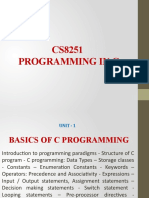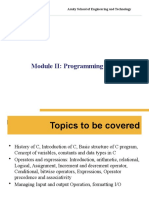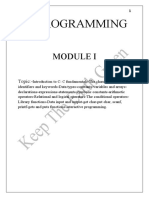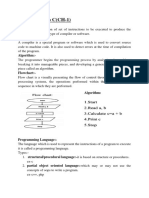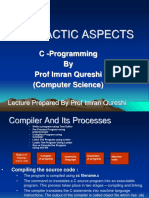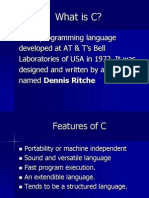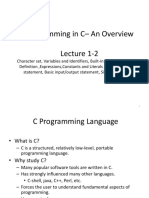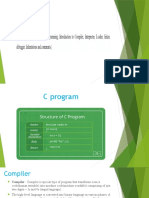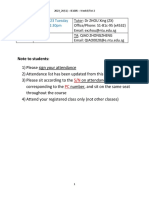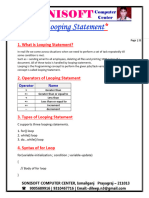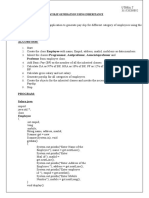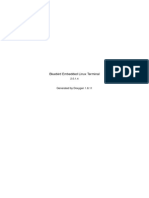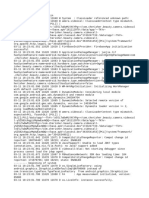0% found this document useful (0 votes)
11 views27 pages1 Introduction
The document provides an overview of programming languages, specifically focusing on C, including its types, features, and execution process. It explains the roles of compilers and interpreters, the structure of C programs, data types, constants, variables, and operators. Additionally, it covers programming techniques, history, and standard input/output functions in C.
Uploaded by
akilakarthi2006Copyright
© © All Rights Reserved
We take content rights seriously. If you suspect this is your content, claim it here.
Available Formats
Download as DOC, PDF, TXT or read online on Scribd
0% found this document useful (0 votes)
11 views27 pages1 Introduction
The document provides an overview of programming languages, specifically focusing on C, including its types, features, and execution process. It explains the roles of compilers and interpreters, the structure of C programs, data types, constants, variables, and operators. Additionally, it covers programming techniques, history, and standard input/output functions in C.
Uploaded by
akilakarthi2006Copyright
© © All Rights Reserved
We take content rights seriously. If you suspect this is your content, claim it here.
Available Formats
Download as DOC, PDF, TXT or read online on Scribd
/ 27


